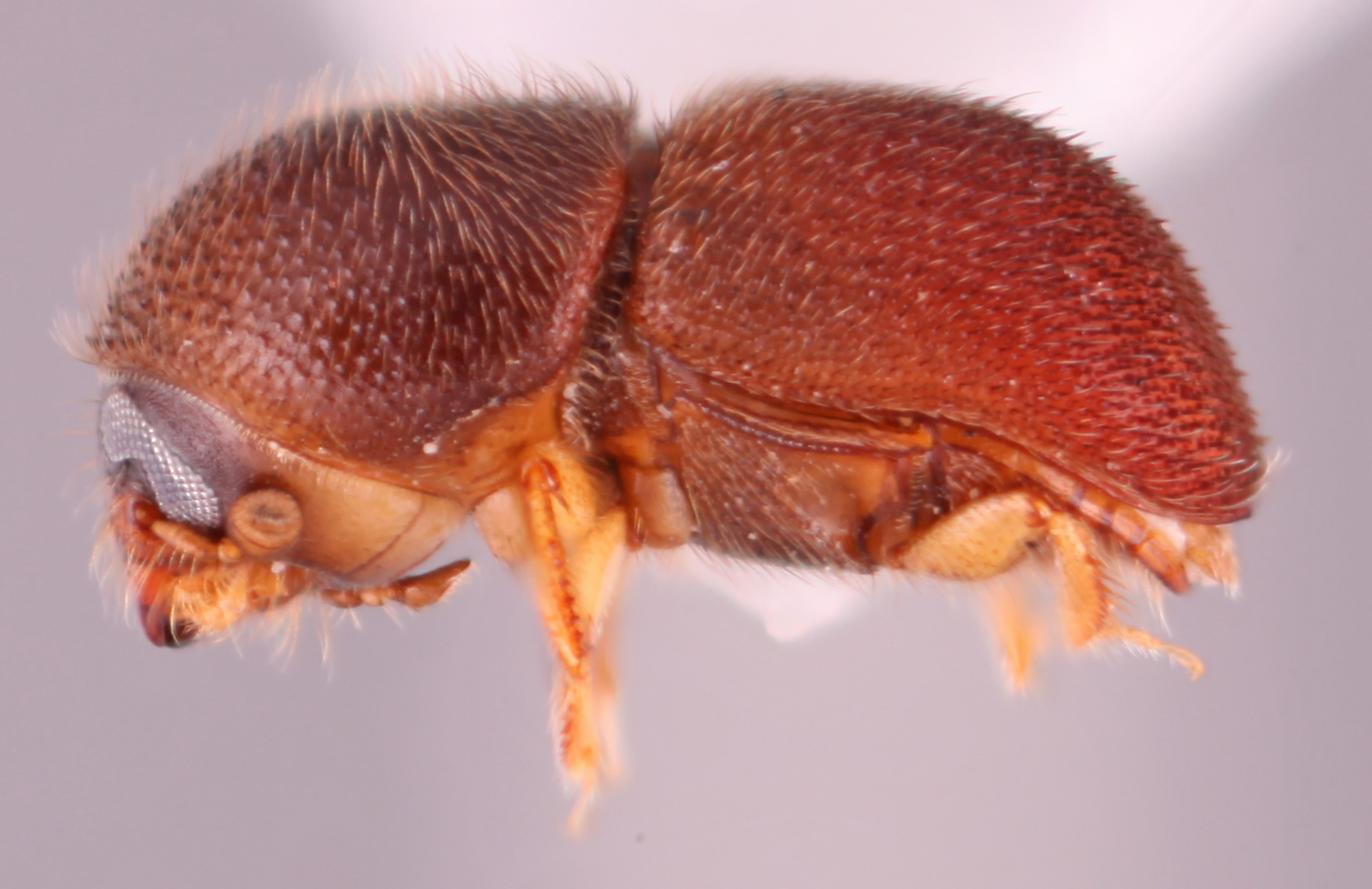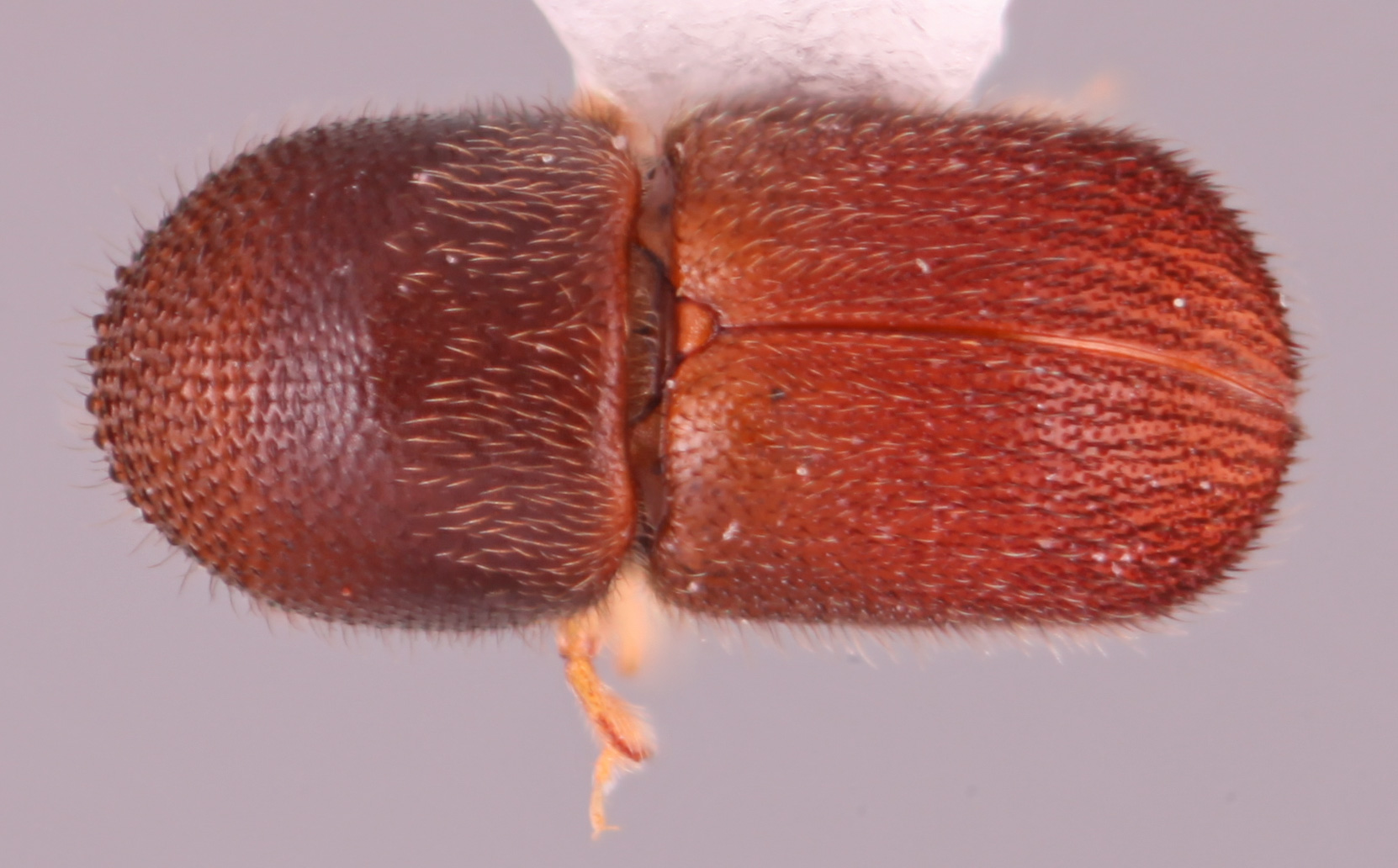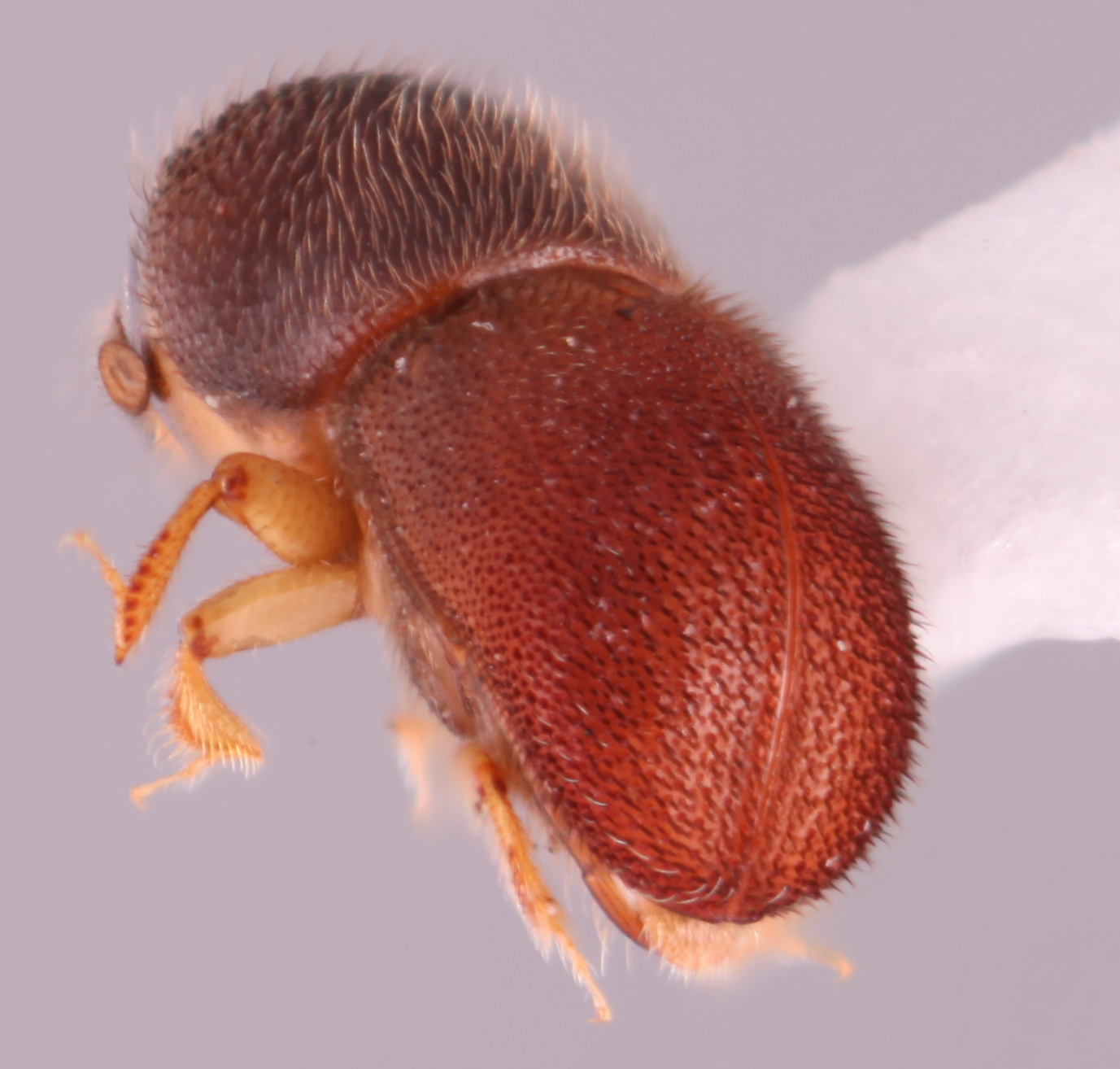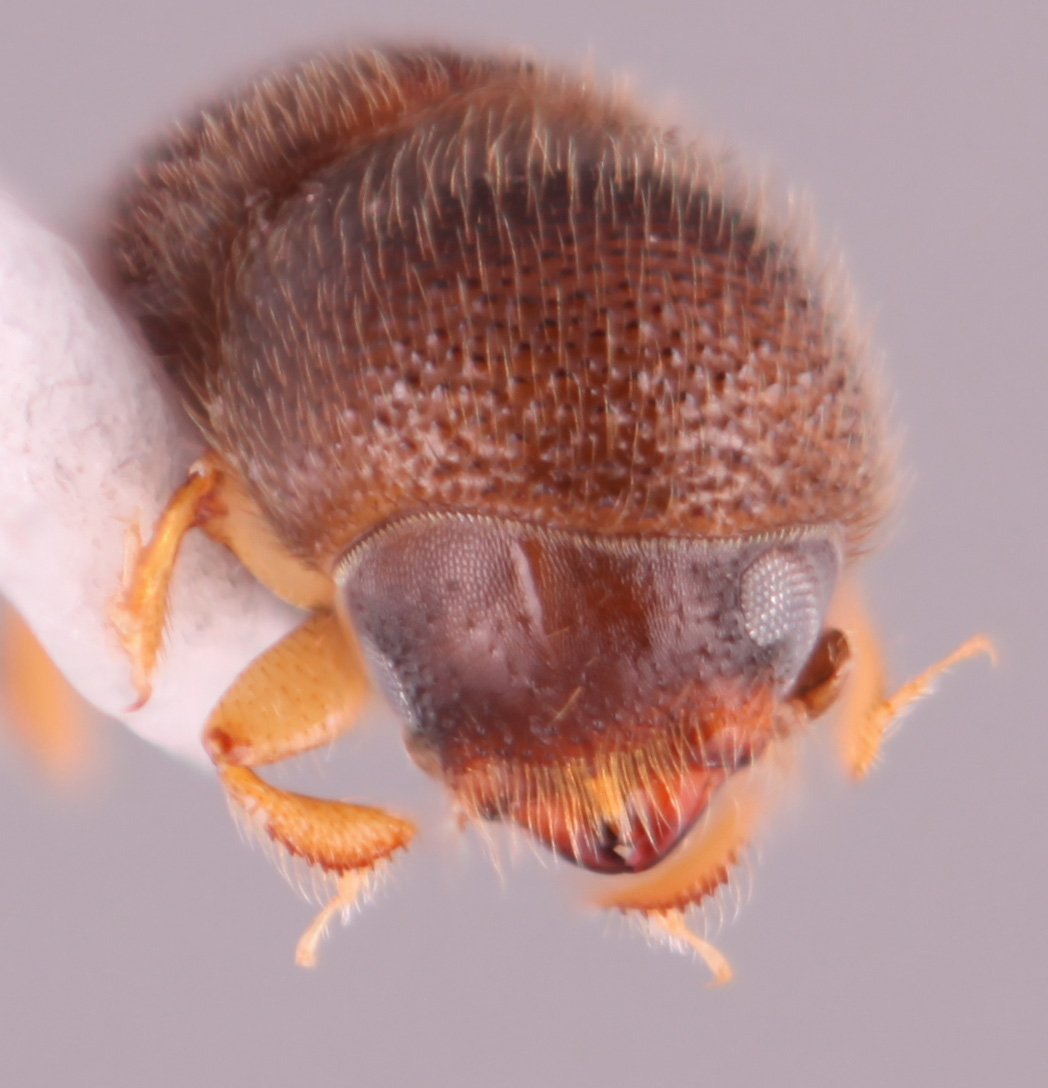Arixyleborus granulifer
|
Arixyleborus granulifer lateral; S.M. Smith |
|
Arixyleborus granulifer dorsal; S.M. Smith |
|
Arixyleborus granulifer declivity; S.M. Smith |
|
Arixyleborus granulifer frontal; S.M. Smith |
Taxonomic history
Xyleborus granulifer Eggers, 1923: 206.
Arixyleborus granulifer (Eggers): Browne, 1955: 350.
Diagnosis
1.9−2.0 mm long (mean = 1.98 mm; n = 5); 2.11−2.44 times as long as wide. This species is distinguished by the protibiaprotibia:
tibia of the first pair of legs
posterior face flat and unarmed; antennalantennal:
pertaining to the antennae
club as broad as tall; posterolateralposterolateral:
relating to end of the side part/portion
 carinacarina:
carinacarina:
an elevated ridge or keel, not necessarily high or acute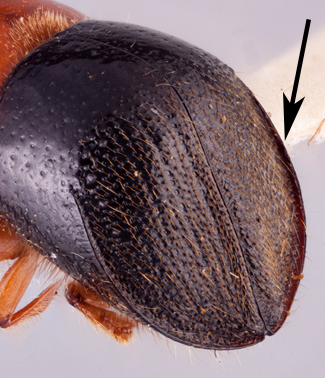 oblique, granulategranulate:
oblique, granulategranulate:
pertaining to a coarse, grainy surface texture
 ; elytralelytral:
; elytralelytral:
pertaining to the elytra
discdisc:
the flat central upper surface of any body part (e.g. pronotum and elytra) flat, without a transverse depression; striaestria:
flat, without a transverse depression; striaestria:
punctures in rows, which may or may not be impressed to make grooves not impressedimpressed:
not impressedimpressed:
a depression in a surface
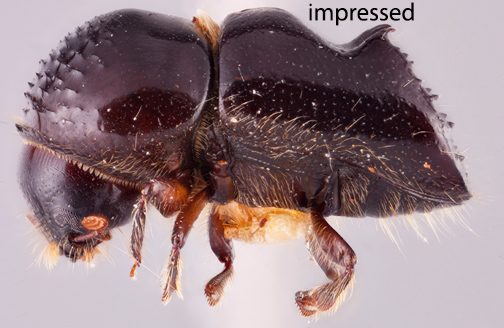 ; and declivitaldeclivital:
; and declivitaldeclivital:
pertaining to the elytral declivity
interstriae bearing a row of short erecterect:
pertaining to setae that have their apices directed away from the body and appear straight
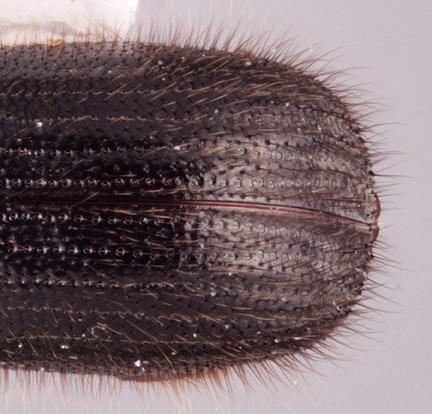 bristles and longer semi-erect hairlike setaeseta:
bristles and longer semi-erect hairlike setaeseta:
small hair-like or scale-like structure
, setaeseta:
small hair-like or scale-like structure
as long as an interstriainterstria:
longitudinal spaces along the elytra between the striae, which is not as<br />
impressed and bear smaller punctures.
 width.
width.
May be confused with
Arixyleborus hirsutulus and A. sittichayai
Distribution
‘Borneo’, Indonesia (Mentawai Islands, Sulawesi, Sumatra), East & West Malaysia, Philippines, Sri Lanka, Thailand
Host plants
Polyphagous. Ohno (1990), for example, records twenty different genera in fifteen different families.
Remarks
Browne (1961b) describes the gallery system, and notes that the life cycle takes about 8 weeks.
DNA data
Sequences available for COI and CAD.
COI: MN619855
CAD: MN620147

